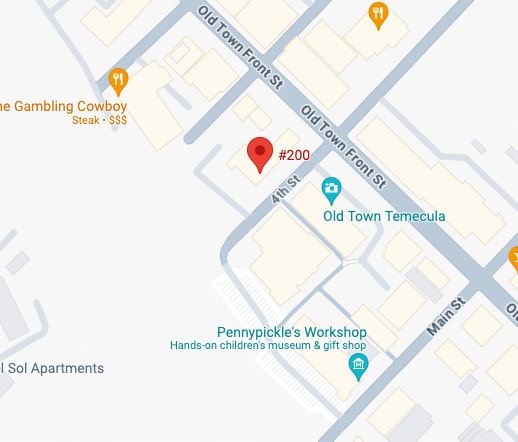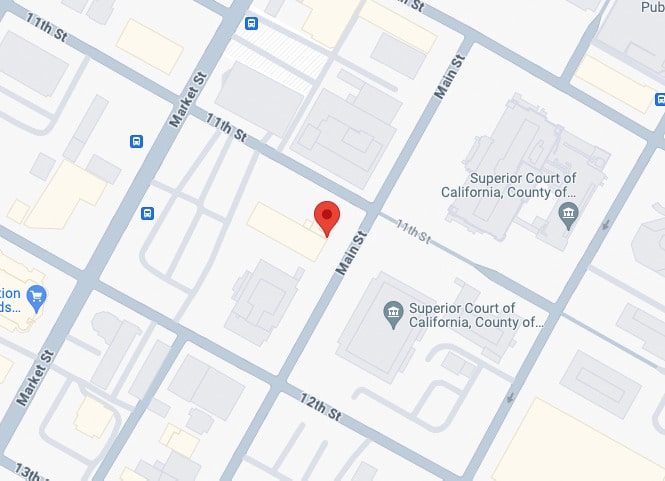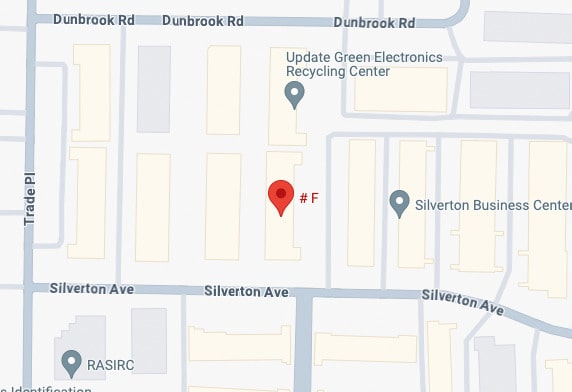The California juvenile justice system operates differently from the adult justice system, and not all parents are aware of the next steps to take. Minors typically do not post monetary bail, unlike adults who seek pretrial release. The only way a minor has to post bail to secure their release is when the case is transferred to adult court.
For most juveniles, the court instead holds a detention hearing to determine whether the child should be released to go home or should be detained. This decision is based on factors such as community safety and the likelihood of the child attending subsequent hearings.
Understanding how these hearings operate and the available options will help you better prepare your child to go through the bail process. This guide will assist you in knowing how the juvenile bail system works in California and what you can do to protect your child's future.
Understanding Juvenile Bail Bonds
Bail is a monetary pledge in the adult criminal justice system that a defendant will attend their court dates. It is a very transactional and punitive system. The juvenile justice system, which is regulated by the California Welfare and Institutions Code (WIC), has an entirely different purpose: to ensure the care, protection, and healthy mental and physical growth of children who enter its jurisdiction. This rehabilitative emphasis significantly impacts the whole process, including the concept of bail.
The Differences Between the Juvenile and Adult Systems
An essential distinction that catches most parents off guard is the fact that in California, minors are not guaranteed the constitutional right to be placed on bail. A juvenile is not released on bail as an adult because most offenses are not subject to bail; a juvenile's release is determined during a formal detention hearing.
This is not a hearing concerning a financial transaction, but it is a hearing concerning whether the minor should be held or released, depending on several factors concerning their safety, the safety of the people, and the probability of the minor showing up in court on subsequent dates.
The main aim of the court is not to punish the child by imposing a big bail. Instead, the probation officer or judge will decide whether there are any compelling reasons why the minor should remain in custody. These reasons include:
- Protecting the minor from injury
- The minor is a great danger to the community
- The minor will most probably escape the jurisdiction of the court
- The community needs to be safeguarded against the dangerous behavior of the minor
This rehabilitative emphasis implies that the court will be more inclined to use alternatives to detention, including release to the parents under certain conditions. It aims to offer a channel through which minors can grow into healthy adults who can positively impact their communities.
What to Expect in the Juvenile Justice Bail Process
The period between arrest and the hearing of a child can be overwhelming. Being aware of every step will keep parents calm and focused.
Primary Arrest and Incarceration
A minor is placed under temporary custody after they are arrested. They go through the booking process like adults, which involves gathering personal information, fingerprints, and photos. The child is then sent to a juvenile detention facility called juvenile hall. Before a court hearing, probation is generally required to release the minor to a parent or guardian, or place them on home supervision, unless the case meets specific legal criteria that justify detention.
The Detention Hearing
The detention hearing is the most significant part of deciding whether a minor will remain in custody or be released. If a youth is detained, the petition must be filed within 48 hours (excluding non-judicial days), and the detention hearing must be held by the end of the next judicial day after filing.
At the detention hearing, the juvenile court decides whether to detain or release the minor; the probation officer provides a report and recommendation. In this hearing, they take into account several factors so that they can decide on the most appropriate course of action. These considerations are weighted mainly to strike a balance between the minor's welfare and the population's safety. These factors include the following:
- Age of the Minor: The minor's age is an essential consideration. A 12-year-old and a 17-year-old will not be treated the same because they are at different developmental stages, and the responsibility level that can be placed on them is different. Also, a 17-year-old can be transferred to an adult court if they committed a grave felony
- Character of the Crime: The seriousness of the alleged crime is one of the significant factors. If a minor commits a non-violent crime, they are much more likely to be released to their parents. However, for more serious, violent felonies, a judge is more apt to impose detention because the minor might be deemed a threat to society
- First-Time vs. Repeat Offenders: California judges tend to be more lenient towards first-time offenders, which indicates the system's rehabilitative nature. They can consider a first-time offense a lesson, a diversion, and an early intervention opportunity. On the other hand, a minor who has a record of crime might be perceived to be a more serious flight risk or a greater danger and may be placed under more stringent terms or detained
- Criminal Record of Juvenile: The criminal history of a minor before the court, such as any previous petitions that have been sustained against them, and their record of adherence to past court orders, will be carefully examined. Previous non-adherence to probation or diversion programs may result in an assumption that the minor should be detained.
Legal Representation
Legal assistance is required at all levels. A minor is entitled to an attorney throughout the proceedings, beginning with the detention hearing. The lawyer defends release, provides equal terms, and defends the child's rights. They can also collaborate with probation officers to submit a home supervision plan to demonstrate to the court that the child can safely stay home until further hearings.
Situations where Bail Applies to Minors
Monetary bail is not usually involved in the juvenile court process in California. However, this is not the case if the minor is transferred to the adult criminal court instead of the juvenile system. This placement occurs under very few conditions and is typically used with older teens, 16- or 17-year-olds, with allegations of especially violent or serious felonies. There are also rare instances of 14- or 15-year-olds being transferred to adult court, although recent state law changes have rendered this practice more of an exception.
A case to be transferred out of juvenile jurisdiction is not automatically decided. Before that, the court holds a fitness or transfer hearing. At this point, a judge considers several critical factors:
- The severity of the crime
- The history of the minor in the justice system
- The maturity or sophistication of the criminal
- The possibility of rehabilitation based on the programs that are offered in the juvenile court
Only when the court finds that the minor cannot be effectively rehabilitated within the juvenile system will the case be taken to adult court.
After a case has been transferred, the minor is handled according to the same procedural rules as adults. This implies that the court can set bail as it would be the case with any adult defendant.
The family may have to deal with a licensed bail bond company to obtain a pretrial release, requiring them to pay 10% of the bail amount as a fee. Bail is never assured, even then. Judges can refuse bail when they feel that the defendant is a danger to the community or that the defendant is unlikely to appear in subsequent hearings.
This transition to the adult system is a significant change: a juvenile now has to contend with the full force of adult criminal law, including the option of pretrial release on monetary bail.
Conditions of Release
A court may place certain conditions on a minor when releasing them. These requirements are not punitive but intended to help in rehabilitation and promote law-abiding behavior.
Counseling Requirements
Counseling is a common condition because behavioral or emotional problems often cause delinquent behavior. Options include:
- Individual Counseling: One-on-one counseling to deal with substance abuse, anger, or trauma
- Collaborative Counseling: It is a team-based approach to counseling that uses mental health professionals and service providers to establish robust support systems
- Parental Counseling or Parenting classes: Parents can be instructed to attend classes to enhance communication and learn effective methods of directing their child
No-Contact Orders
The court tends to grant protective orders in situations involving victims. These do not allow the minor to contact the victim or their family directly or indirectly. Similar limitations can be imposed in cases of co-offenders. Breaking a no-contact order may result in re-detention.
Regular Check-ins
One of them is frequent meetings with a probation officer. Such check-ins help track compliance and accountability. They also enable the probation officer to facilitate the development of the minor and reinforce positive behavior.
Curfews
Curfews limit the activities of a minor at specific times. They also decrease exposure to risky behavior by restricting the amount of time spent at night and increasing structure and responsibility.
School Attendance
Rehabilitation is mainly based on education. Courts usually insist on regular attendance at school and grades. Violating the bail conditions can be viewed as a drop in performance or missing school, resulting in more serious consequences.
Consequences of Violation of Bail Conditions
Violating the conditions of bail is a serious issue and can have severe consequences and affect your child's future.
Legal Consequences
The court may issue new penalties or charges if a minor violates the bail rules. Juvenile judges can revoke bail or probation and incarcerate in juvenile hall. Depending on the violation, more stringent conditions may be enforced, and original charges may be pursued without mercy.
Influence Future Bail Decisions
The history of non-compliance can be harmful to future cases. The court will look at past behavior if your child is arrested again. Any previous offenses contribute to the possibility of being denied bail and placed under arrest on the spot.
Immediate Punishments
Judges respond quickly to violations by imposing additional penalties or restrictions. These may involve placing the minor back into custody, putting them in a juvenile camp, a ranch, or imposing restrictive measures such as home confinement with electronic monitoring.
The Legal Rights of Your Child During the Bail Process
Protecting the legal rights of a minor is essential when a minor is arrested. A minor’s best supporters are their parents, who provide them with fair treatment and help them through the process. The rights accorded to minors include the following:
Right to a Fair Hearing
All children are entitled to a fair hearing on detention. Judges should examine all the evidence and weigh the minor's best interests against the safety of the community before determining whether to release or detain the minor.
Right to Appeal Bail Rulings
In case of a denial of bail or excessive conditions, a rehearing or an appeal can be requested by your attorney. The Court of Appeal will look at whether the decision made by the judge was just.
Right to Have a Criminal Defense Attorney
The most valuable protection for your child is legal representation. A skilled juvenile defense lawyer will champion release, protect your child's rights, and guide you through the whole process.
The Essential Responsibilities of Parents and Guardians
Parents and guardians are critical to the juvenile justice process. The courts consider parents to be the primary supervisors and support systems for minors.
Ensuring Compliance
Once released, parents should ensure that their child observes all bail conditions. This includes:
- Enforcing curfews
- Tracking school attendance and school performance
- Monitoring attendance of counseling sessions
- Avoiding any contact with persons who are subject to protective orders
- Giving Emotional and Practical Support
Minors can be overwhelmed by arrests. The parents are expected to create a stable, supportive environment by:
- Listening without judgment
- Promoting work and improvement
- Providing a healthy and safe home
Legal Responsibilities
Parents who sign the release of a child are legally obligated to make sure the child attends court. If the child does not show up, the court may issue a warrant to arrest them.
Reasons behind Juvenile Delinquency
Parents must know what motivates delinquent behavior. Arrests are symptoms of underlying problems that should be resolved to avoid future problems.
Socioeconomic Factors
The absence of opportunity and poverty can contribute to stress and limit access to education, safe places, and positive role models. This usually results in low academic achievement and increased delinquency.
Substance Abuse
The use of alcohol and drugs distorts judgment and encourages impulsive action. Adolescents with addiction can be at higher risk of committing crimes, which is why counseling or treatment programs are necessary.
Mental Health Issues
Minors in the justice system have anxiety, depression, trauma, and behavioral disorders. They can resort to delinquency as a coping mechanism in the absence of healthy coping skills.
Peer Influence
Peer pressure may have a significant influence on teens, forcing them to commit delinquent acts in an attempt to be accepted.
Family Environment
Homes that are violent, poorly supported, or inconsistently-disciplined are associated with behavioral problems, and stable and supportive families are associated with delinquency prevention.
How Bail Bond Companies Can Help
Bail does not exist in the juvenile process for most young people in California. The only reason bail is considered is when the case of a minor is transferred to adult court, which is usually the case with older teens (17-year-olds) charged with a serious offense. After being transferred, the minor is handled as an adult, including posting bail.
At that point, families can resort to a bail bond company. The bail bondsman guarantees the court that the minor will attend all court hearings. The bail bondsman does this service for a non-refundable premium fee, usually 10 percent of the set bail amount. Therefore, the family is not required to pay the full bail amount up front.
Parents must remember that they are obliged to legal and financial duties when they sign a bail bond contract. Failure to appear in court may have dire economic effects on the family.
Find Reliable Bail Bond Services Near Me
As a parent, it is critical to understand how bail works for minors when your child is arrested. Financial bail is not typically a component of the juvenile court process in California. The decision to release a child is taken at detention hearings. During a detention hearing, the judge considers the safety and responsibility of the child. Bail only applies when your child’s case is transferred to the adult court, where monetary bail is appropriate. Since the process may be daunting and complicated, you should have qualified legal personnel by your side. To learn more about juvenile bail or obtain immediate help in Temecula, contact Justice Bail Bonds at 714-541-1155. We have 24/7 bail bondsmen ready to assist you in taking your child home and moving confidently.









